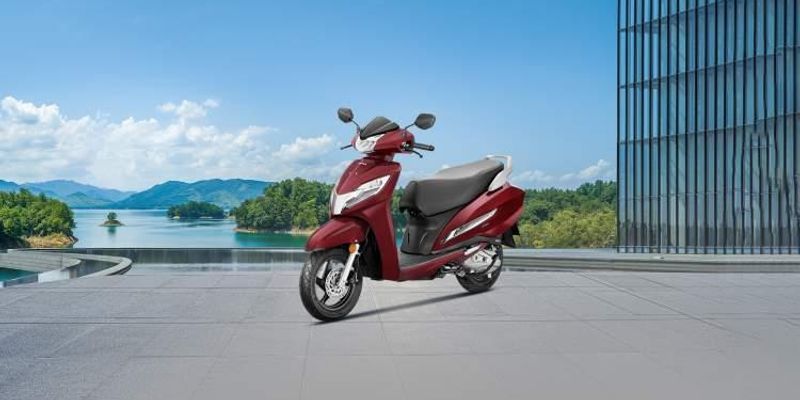If there’s one thing that brings together Indian commuters across states, it’s not just a shared love for chai or cricket, but the unmistakable hum of the Honda Activa—India’s most beloved scooter. With over 3 crore units sold and a market presence for over two decades, the Activa isn’t just a scooter—it’s a phenomenon. It reshaped Indian transportation, catering to families, professionals, and everyone in between. But how did Activa manage to pull off this long-standing dominance? Buckle up (or in this case, rev up), as we take you on a ride through the history, strategy, and secrets behind Honda Activa’s success!
The Dawn of Gearless Mobility: Timing Is Everything
The story of Activa begins in 2001 when Honda noticed a curious gap in the two-wheeler market. The era of macho motorcycles like the Bajaj Pulsar was peaking, dominating around 80% of the market, with gearless scooters being largely sidelined. The majority of two-wheelers were bikes driven by young males, leaving behind a vast group of potential customers—middle-aged individuals and women—who sought easier, gearless alternatives. Honda saw the opportunity and launched Activa, India’s first family-friendly gearless scooter.
What set Activa apart from the start? It wasn’t just another scooter—it was positioned as a unisex product. Honda understood the emotional appeal behind family vehicles and sought to create something accessible for everyone—mothers, fathers, and young adults alike. In fact, more than 33% of Activa users were female, a testament to its gender-neutral appeal. And guess what? Activa went on to become the scooter of choice for Indian families—a role earlier held by the iconic Bajaj Chetak.
Nailing the “Swiss Knife” Approach
It wasn’t just about being a gearless scooter—Activa was designed to meet the core needs of the Indian consumer, something Honda got spot-on. Here’s a quick breakdown of why:
- Fuel Efficiency: With a mileage of 60 km per liter, Activa outpaced its competitors, where most scooters managed around 40 km per liter. This was a game-changer in a price-sensitive market like India.
- Durability & Engine Power: Armed with a 110cc to 125cc engine, the Activa balanced performance and fuel efficiency, appealing to both young riders and middle-aged users. Its sturdy metal body stood strong, lasting over 15 years for many users without significant issues—a scooter that withstood 1 lakh km without major engine faults is bound to create loyal customers!
- Storage & Practicality: With ample storage space for helmets and groceries, Activa fits perfectly into the lifestyle of Indian families. The simple yet effective design choices like better space management and the metal body (instead of plastic) made it both a practical and reliable choice.
Breaking the Gender Stereotype: Smart Positioning
Scooties were traditionally viewed as a feminine mode of transportation, with bikes being considered more masculine. But Honda broke this stereotype with Activa, crafting ads that depicted men and families alike riding the scooter. Its minimalist and non-flashy design was intentional—Activa was positioned as a scooter for everyone.
Activa’s advertising campaigns played a crucial role here. Honda focused on showing men using Activa for daily family needs, subtly hinting that riding a scooter was no longer a gendered activity. With a powerful 110cc engine—just shy of the 150cc offered by motorcycles like the Pulsar—Activa gave men no reason to complain about performance either. And the rest is history.
Honda’s Masterstroke: Scale and Expansion
Activa’s early success was partially due to Honda’s partnership with Hero under the brand Hero Honda. By 2010, when the two brands had split, Honda had gone all-in. They aggressively expanded their reach, opening one new dealership every day between 2010 and 2014, boosting their network from 1,200 outlets to over 7,000. By this time, Activa was no longer just a scooter; it was a household name.
As India’s tier 2 and 3 cities began developing, Honda shifted focus, tapping into these regions with relentless expansion. Honda even began exporting Activa globally, with 10% of total sales being international, reinforcing India’s role as a manufacturing and export hub for two-wheelers.
Adapt or Die: Evolving With the Times
Unlike many other brands that struggled to stay relevant, Honda ensured Activa evolved. Over the last 20 years, Activa has seen various iterations, like the Activa 125 to cater to higher performance needs and the introduction of smart key technology—a first in Indian scooters. Honda ensured that Activa remained a scooter that met evolving demands without compromising its core values of reliability, ease of use, and family-friendliness.
Numbers Speak: Dominance in 2024
By 2024, Activa will continue to dominate the scooter market, with annual sales crossing 22.5 lakh units—a number that equals the combined sales of the next five best-selling scooters. That’s no small feat. Activa still holds over 50% of the market share in the scooter segment, and its sales numbers far outpace any competitors.
From Humble Beginnings to Iconic Status
Honda Activa’s story is one of smart insights, precise timing, and relentless innovation. By tapping into the under-served segments and positioning itself as a family vehicle, Activa cemented its place in the hearts of Indian consumers. Add in Honda’s aggressive scaling strategy, quality engineering, and continued innovation, and you’ve got yourself a winning recipe.








![Read more about the article [Funding alert] Pickright Technologies raises $200K from JITO Angel Network](https://blog.digitalsevaa.com/wp-content/uploads/2021/05/funding23-1620980416373-300x150.jpg)

